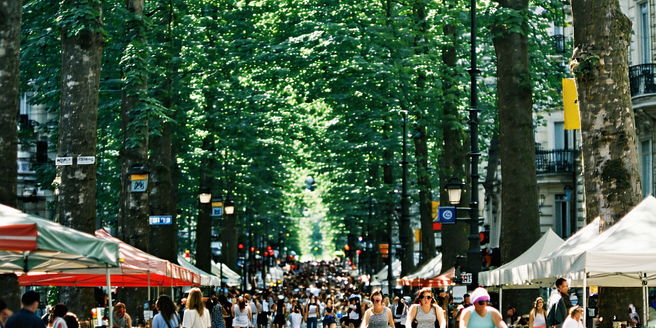
Understanding the Concept of Cooling Corridors
Cooling corridors are strategic integrations of green spaces, water bodies, and shaded pathways designed to mitigate urban heat. These are crucial in countering the heat island effect prevalent in densely populated regions. By using natural elements, cooling corridors foster cooler microclimates. They act as green lungs, filtering pollutants while encouraging biodiversity. Furthermore, these corridors serve as recreational areas, promoting physical well-being through accessible green spaces. Urban planners consider factors such as wind patterns, sun exposure, and existing urban layouts when integrating cooling corridors. Their purpose extends beyond temperature control, aiming to enhance urban aesthetics and support ecological balance. As cities continue to grow, the adoption of cooling corridors represents a sustainable step towards environmentally-friendly urban development.
The Benefits of Cooling Corridors in Cities
Cooling corridors offer multiple advantages, enhancing quality of life and ecological balance in urban areas. They significantly reduce ambient temperatures, providing relief during extreme heat. As natural air conditioners, these corridors lower energy consumption by decreasing the reliance on artificial cooling. The presence of greenery improves air quality by absorbing pollutants and carbon dioxide. Moreover, cooling corridors can augment local biodiversity, serving as habitats for various species. Socially, they provide recreational spaces for residents, promoting health and community interactions. Economically, property values may rise due to increased desirability of areas with cooler and greener environments. By improving urban climate resilience, cooling corridors address the twin challenges of urbanization and climate change. The widespread implementation potentially transforms cities into more livable, sustainable spaces.
Design Principles for Effective Cooling Corridors
Successful cooling corridor design requires careful planning and execution. The selection of appropriate vegetation is crucial, favoring native species that provide shade, are drought-resistant, and support local fauna. Integrating water features, such as ponds or streams, can enhance cooling effects through evaporation. Wind paths should be optimized to facilitate air movement, aided by strategically placed openings and vegetation arrangements. Materials used in pathways and surrounding infrastructure should have reflective properties, reducing heat absorption. It’s essential to consider the urban layout, ensuring connectivity with existing parks and green spaces to maximize cooling benefits. Effective community involvement during planning ensures acceptance and utilization of the corridor. By adhering to these principles, urban planners can create cohesive environments that not only cool but also enhance the urban experience.
Challenges in Implementing Cooling Corridors
Implementing cooling corridors in urban settings presents several challenges. One of the primary concerns is land availability, as urban spaces are often densely built, leaving limited room for new green projects. Retrofitting existing infrastructure can be costly and complex. There’s also the challenge of ensuring long-term maintenance of these corridors, requiring commitments from local governments and communities. Additionally, balancing the needs for urban development with green space preservation can be contentious. Unlike traditional construction, cooling corridors mandate interdisciplinary cooperation among planners, ecologists, and the community. Climate variability poses another challenge, as changing weather patterns may influence the effectiveness of designed solutions. Addressing these challenges requires innovative thinking and collaborative governance to successfully integrate cooling corridors into urban environments.
Case Studies: Successful Cooling Corridors Worldwide
Several global cities have implemented exemplary cooling corridors that serve as benchmarks for urban planning. Singapore’s ‘Park Connector Network’ integrates parks via green pathways, reducing city temperatures while promoting biodiversity. Similarly, Barcelona’s ‘Green Infrastructure and Biodiversity Plan’ has increased green spaces, fostering cooler urban microclimates. In New York City, the ‘High Line’ elevated park incorporates green design, offering a cooler urban oasis. Melbourne’s ‘Urban Forest Strategy’ enhances canopy coverage, mitigating urban heat through thoughtful vegetation planning. These case studies highlight common success factors such as strong policy frameworks, community engagement, and continual monitoring and adaptation. By studying these initiatives, urban planners worldwide can devise strategies tailored to their unique contexts, promoting sustainable urban cooling and enhancing resilience against climate change.
